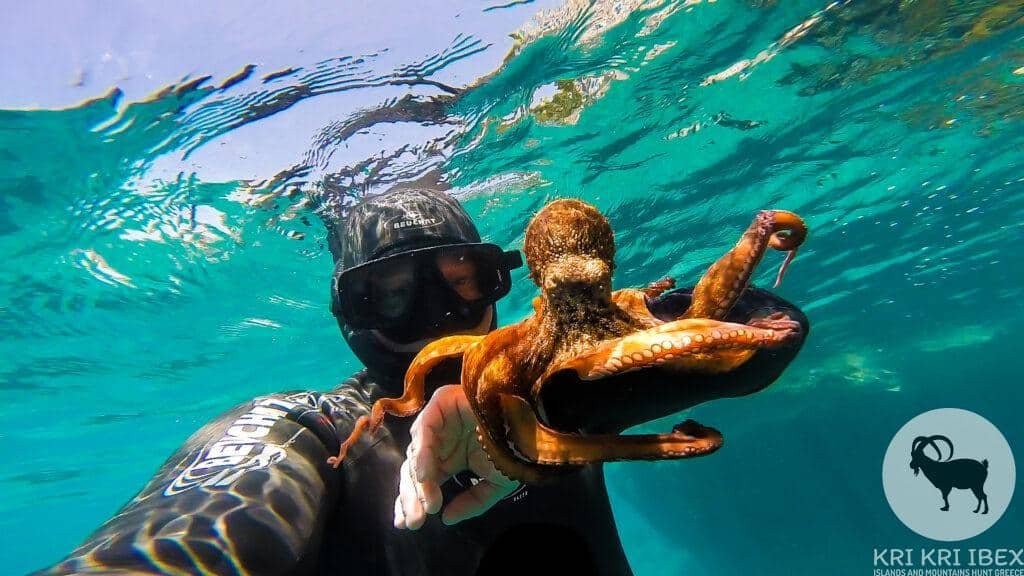Join The Ride
Subscribe to our newsletter with stories from our latest adventures and the travel tips or ask for quota.

The thrill of spearfishing in Greece is noteworthy in itself. You must hold your breath and possess excellent aim and steady hands in order to succeed. You are not permitted to utilise air-pressured spearguns. Perhaps courage will pay off, although it may be risky. If you feel secure diving, you’ll experience an underwater pursuit like no other. Every fishing trip should include a healthy dose of Grouper and Snapper, but there is one type in particular that makes for a tough spearfishing opponent, and for good reason. Dentex are a rare species of fish that possess speed, strength, and sharp fangs, in addition to an extremely cautious attitude. This means that hunting them requires more than just physical strength, but also intelligence.
The diving restrictions in Greece are a big problem, especially for divers interested in ancient shipwrecks and archaeological sites. The Greek economy and tourism are encouraged by the new law, which removes many of the restrictions on divers. It allows unescorted dives at many archaeological sites and shipwrecks, as well as at shipwrecks over 50 years old. Ancient wrecks in Greek waterways will be opened up after this summer, including many wrecks that were sunk during World War II. In addition to the Messina Navarino Bay archaeological park, a park will be opened opposite Methoni on the Sapientza islet.
Capt. Vokadinov is a licensed diving instructor, so you can be sure you’re in good hands if you choose a Snorkeling trip to the archeological park and shipwrecks around Sapientza island. Snorkeling equipment is partially provided. You need to bring wet-suits, masks, and fins if you want. Or you can buy or rent on a spot.



Around 1920, local fishermen discovered archaeological items, including marble fragments, in shallow water off Cape Karsi, north of Methoni, opposite Sapienza. In 1925, lawyer/historian Dionisios Potaris (1860-1932) discovered and documented the ‘marbles’ after following the indications of local fishermen. These ‘marbles’ are found in a location 50-60 m from the northern coast of Sapienza in depths of 6-7 m and 10 m from Cape Spitha. The ‘shipwreck of columns’ includes a scattering of various segments from columns that are aligned and situated on the seabed. Only one of the 34 marble fragments is intact, with a height of 8 m and a diameter of 0.90 m. The other 28 are grouped together, and the other six are spread over a distance of 60 m. This shipwreck site will be the initial archaeological site that may be explored under water. The second shipwreck has been found near the shipwreck of columns in the northern part of Sapienza Island at a depth of 15 m. The shipwreck is lying on the ocean floor. Sarcophagi containing stone coffins are among the ship’s cargo. One sarcophagus is broken, most likely as a result of the shipwreck. The sarcophagi measure 2.20 x 0.80 m and bear reliefs and simple, linear decorations. The shipwreck dates to the third century AD. In 1970, EUA conducted an archaeological study of the shipwreck. The shipwreck of sarcophagi and the shipwreck of columns were studied as part of an educational programme which was initiated by EUA and the University of Bologna in collaboration with Prof. A. Nanneti.

Do goats have the capability to swim in the ocean? The answer is yes, as long as the waves are not too large. From birth, goats are natural swimmers that must find food in the wild. Wild goats will swim to get to new grazing areas, even if that requires swimming. Domesticated goats are unlikely to swim, and most will avoid it. However, domesticated goats will not hesitate to swim if they need to get to new grazing areas. Wild goats are able to swim longer and further than domesticated goats.
Three species of sea turtles frequent the Mediterranean. The Loggerhead turtle (Caretta caretta) and the Green turtle (Chelonia mydas) nest here, while the Leatherback turtle (Dermochelys coriacea) is an occasional visitor.
Cave diving is underwater diving in water-filled caves.
Monachus monachus, also known as the Mediterranean Monk Seal, is found around the Mediterranean Sea region and the Northwest African Coast.
I love octopuses in the Mediterranean. They are intelligent, widespread, and interesting with their remarkable camouflage skills.
Or just sunken treasure.
Subscribe to our newsletter with stories from our latest adventures and the travel tips or ask for quota.
| Cookie | Duration | Description |
|---|---|---|
| cookielawinfo-checkbox-analytics | 11 months | This cookie is set by GDPR Cookie Consent plugin. The cookie is used to store the user consent for the cookies in the category "Analytics". |
| cookielawinfo-checkbox-functional | 11 months | The cookie is set by GDPR cookie consent to record the user consent for the cookies in the category "Functional". |
| cookielawinfo-checkbox-necessary | 11 months | This cookie is set by GDPR Cookie Consent plugin. The cookies is used to store the user consent for the cookies in the category "Necessary". |
| cookielawinfo-checkbox-others | 11 months | This cookie is set by GDPR Cookie Consent plugin. The cookie is used to store the user consent for the cookies in the category "Other. |
| cookielawinfo-checkbox-performance | 11 months | This cookie is set by GDPR Cookie Consent plugin. The cookie is used to store the user consent for the cookies in the category "Performance". |
| viewed_cookie_policy | 11 months | The cookie is set by the GDPR Cookie Consent plugin and is used to store whether or not user has consented to the use of cookies. It does not store any personal data. |